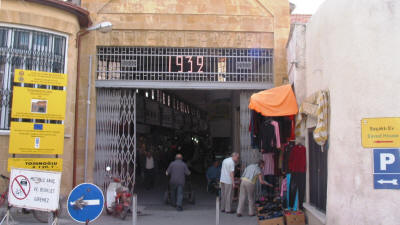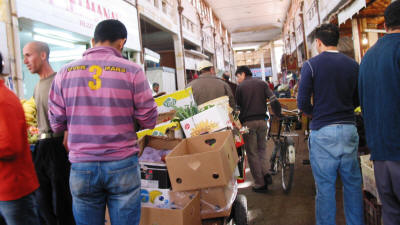The Bandabuliya (Covered Bazaar)
Nicosia, North Cyprus
 |
| The Bandabuliya Entrance |
During the Lusignan and Venetian period, the area of St Sophia (Selimiye) was the main religious and trade centre of Nicosia. This continued under the Ottomans, who started using the Cathedral as a mosque. Selimiye was the meeting point for the citizens of Nicosia, especially on Fridays, to coincide with Friday prayers.
St Nicholas Church (Bedestan) served as a market where mostly textiles were sold. Because of population growth, and because people from all over Cyprus came to the city to sell their goods, new buildings were built around the Bedestan, including the Hans where tradesmen could stay.
In the 1800s, the weekly market place was turned into a permanent market place, and this continued till the Bandabuliya was built.
 |
| The Bandabuliya Interior |
Construction of the Bandabuliya started in 1930, and it was opened two years later in 1932. The bazaar housed everything from greengrocers to butchers and fishmongers.
Population increase, and the movement towards the outskirts of Nicosia, forced shopping centres to be closer to the new settlement areas. The closure of roads leading to Turkish parts of the city in 1958, lead to a further decline.
Recent years have seen a revival of trade, and this historic bazaar is still a superb market for fresh vegetables and meat, as well as Turkish souvenirs. It as mainly frequented by local shoppers, so any visitor can get a taste of shopping in the old city.
In 2010, the Bandabuliya closed for restoration, and re-opened in the Spring of 2012. Sadly the refurbishment has meant that all the character of the old market has been lost. Instead of a Middle East bazaar, we now have the feel of a 1960s English provincial indoor market, that a mediocre architect would be embarrassed to put his name to! Hopefully some of the character will eventually return.
See location in Google maps.
Back to Nicosia Index.